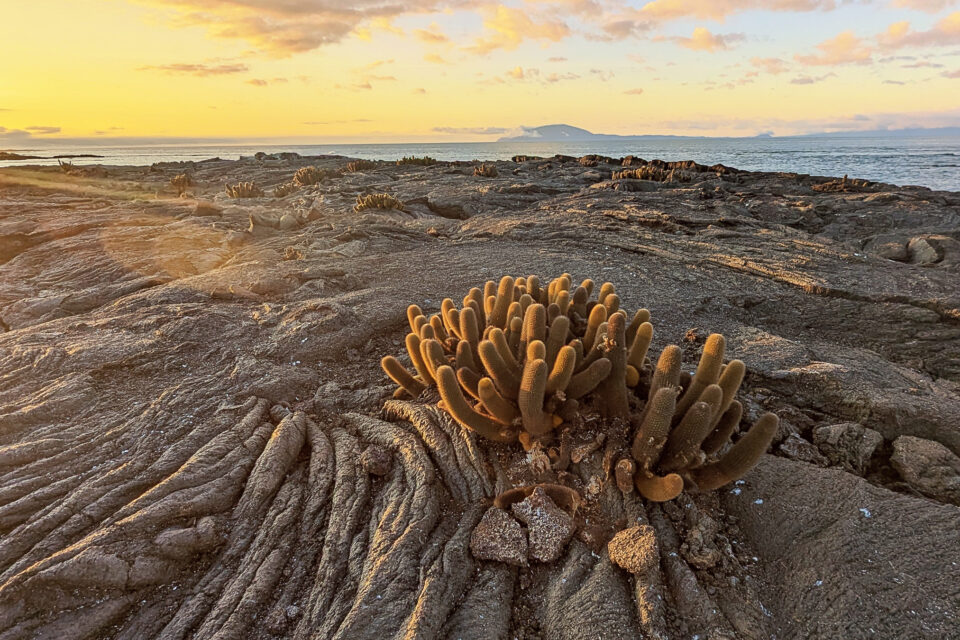
Santa Cruz: The Evolution of the Agricultural Zone
Charlie Ferguson and Daniel Proaño discuss an innovative approach to irrigation in the water-scarce highlands of Santa Cruz, and explain how solving this problem could open up opportunities to rewild marginal agricultural land and boost endemic species.
For many visitors, the highlands of Santa Cruz offer a conventionally leafy backdrop to the drive between Baltra Airport and Puerto Ayora, somewhat mundane compared to the other-worldly wildlife and scenery elsewhere in the Galapagos Archipelago. However, beyond the well-trodden main road, the island’s designated ‘agricultural zone’ is a wonderful mix of community and nature which is both overlooked and undervalued.
Bound by the Galapagos National Park (GNP), the strictly delineated agricultural zone covers an area of approximately 100 square kilometres and is home to over 2,000 people spread between several villages and nearly 400 smallholdings. Several ‘agritourism’ businesses and boutique hotels draw outside visitors, but most of the region relies on pastoral and agricultural farming. Historically, agricultural productivity in Galapagos has been low and improving efficiencies is seen as crucial to reducing reliance on imported goods and progressing towards the UN Sustainable Development Goals.

100
km² - the area covered by the agricultural zone on Santa Cruz
One of the longstanding challenges to agricultural productivity in Galapagos, particularly in the highlands of Santa Cruz, is the lack of distributable water sources. The region’s absence of perennial surface water has resulted in the vast majority of irrigation water being continuously driven up from Puerto Ayora in tankers. Not only does this produce substantial carbon emissions, it can also be a significant economic burden for farmers because water is expensive to buy and is often contaminated (which lowers crop yields).
Alleviation of this type of water scarcity can broadly be achieved in two ways: (1) by identifying alternative sources for provision of irrigation water and (2) by improving the water-use efficiency of agricultural processes. So far, efforts to identify alternative centralised water provision mechanisms for Santa Cruz’s agricultural zone have proved challenging. In early 2022 a project funded by local government failed to find a perched aquifer with an exploratory borehole outside Santa Rosa. Development of a widespread supply network, particularly using existing water sources, would be unfeasibly expensive and disruptive.

The region’s absence of perennial surface water has resulted in the vast majority of irrigation water being continuously driven up from Puerto Ayora in tankers.
This leaves decentralised approaches such as fog or rainwater harvesting. These, while not a panacea, could be used to alleviate the area’s reliance on lowland-sourced water. However, limited regional data exist to quantify the yields available from these technologies, which stymies both institutional backing and organic adoption within the community. This is why Galapagos Conservation Trust (GCT), in collaboration with local NGO Fundación Un Cambio por la Vida (FUNCAVID), is currently implementing an 18-month project collecting yield data from installations capturing fog and rainwater across the highlands of Santa Cruz. This project, which is liaising with Conservation International – Ecuador (CI) and local government, will run until the end of 2023.
Improvement of water-use efficiency offers another mechanism to combat water scarcity and, partly in response to a devastating drought in 2016, local government has supported several initiatives in recent years. As a result, there are numerous storage ponds and large greenhouses across the region and these, along with drip irrigation and hydroponic technologies, are increasingly seen as critical for any profitable agricultural business in the highlands.
Interestingly, this increased emphasis on agricultural production using greenhouses is leading to an increase in ‘unproductive’ land, surrounding areas that offer little economic opportunity for smallholdings. This land has largely been overlooked but, with the right impetus, could offer an exciting opportunity to work with farmers to promote the recovery of endemic wildlife and biodiversity within the agricultural zone (and prevent further expansion of pastoral farming). The relationship between the region’s conservation and agricultural sectors has not always been smooth, with both management of introduced species and use of pesticides ongoing issues. However, there is demonstrated enthusiasm from many landowners to support endemic biodiversity.


Rain and Fog Harvesting
Rain and fog harvesting offers the potential for an alternative method of water provision in the highlands of Santa Cruz, reducing the environmental impacts of transporting water by road.
For instance, CI has ‘sustainable agricultural agreements’ in place with over 40 smallholdings on Santa Cruz. The problem is that, while local farmers have voluntarily signed up to these, they are offered little incentive or support to set aside land for rewilding or supporting endemic ecosystems, and doing so is not necessarily straightforward. For example, one smallholding participating in the fog and rainwater harvesting project has long sought to develop a ‘buffer zone’ on their land adjacent to the GNP to encourage endemic biodiversity. However, accessibility issues have prevented the provision of water necessary for the targetted application of herbicide to control the invasive blackberry plant. By working with this farm to develop a fog harvesting installation in their proposed area, GCT and FUNCAVID are hoping to enable their ambition to advance.
This is just one example, but it is indicative of wider interest in promoting and protecting endemic wildlife in Santa Cruz’s agricultural highlands. With improved water and land management, the region offers opportunities to develop community-driven alignment of sustainable agricultural processes and conservation.

Our rain and fog harvesting project is kindly supported by the Co-op Foundation.
Galapagos Day 2023
On 19 October we returned to the Royal Geographical Society for Galapagos Day 2023, where our theme for the evening was ‘Rewilding Galapagos’.

Related articles


Climate change and plastic pollution: the inextricable link

From COP27 to COP15: Is a global deal on biodiversity within reach?


